Humans have been fascinated by the ocean for as long as we’ve existed. Yet, even after centuries of ocean research and technological advances that allow us to explore further below the surface, the deep ocean still remains largely a mystery. The Hadal zone, the deepest layer of the ocean, is literally named after Hades, the Greek god of the underworld. Dark, threatening, and full of the unknown, the deepest parts of the sea are extremely inhospitable, yet life thrives there. Home to some of the most bizarre natural features and otherworldly creatures on Earth. These are some of the most unbelievable facts you didn’t know about the deep ocean.
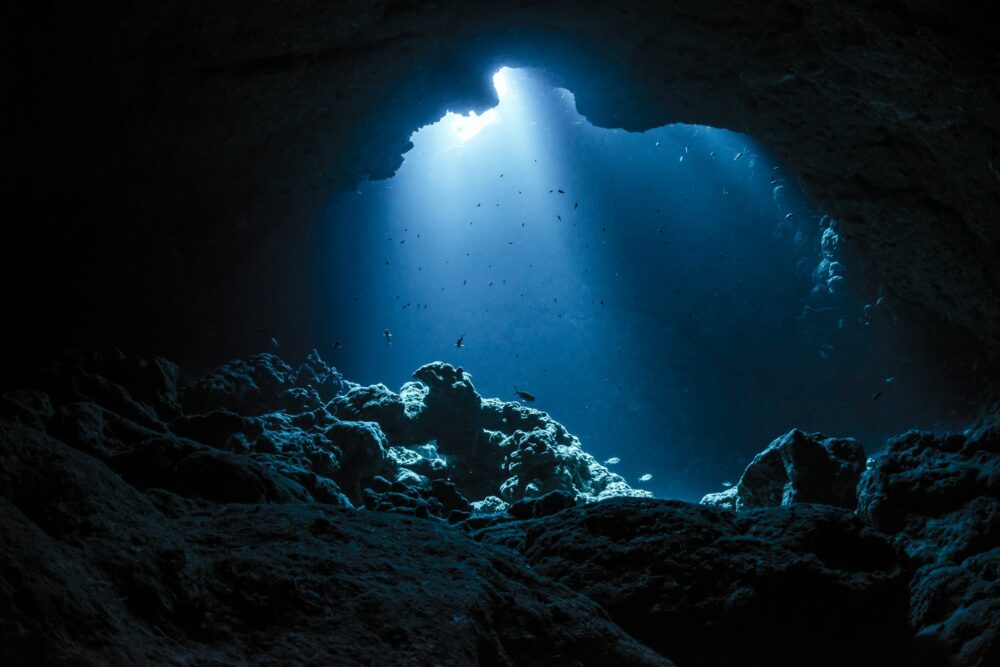
Some of the Most Extreme Creatures on Earth Live in the Deep Ocean
The deepest parts of the ocean are some of the most hostile places on Earth, with pitch-black waters, freezing temperatures, little oxygen, and crushing pressure. Yet, these dark waters are home to a wide variety of unique creatures that have adapted traits that allow them to survive in extreme conditions. More than 200 meters (656 feet) below the ocean’s surface, where little light penetrates the waves, some animals use bioluminescence to attract prey or potential mates in the darkness. While some animals have evolved specialized eyes to see color or in the inky depths, others have no eyes at all, using vibration or pressure to navigate.
No plants can survive in water beyond the reach of the sun’s rays. Bacteria and other microorganisms make food using chemosynthesis, which converts chemicals into energy in the same way that photosynthesis produces energy from sunlight. Fish in the deep ocean have a high concentration of a special chemical called TMAO in their muscles to help withstand the bone-crushing pressure. Some deep sea creatures are equipped with tiny bodies that preserve energy, enabling them to live on very little in waters where food is scarce. There’s even a tiny animal on the ocean floor that is the only known animal that can survive without oxygen.
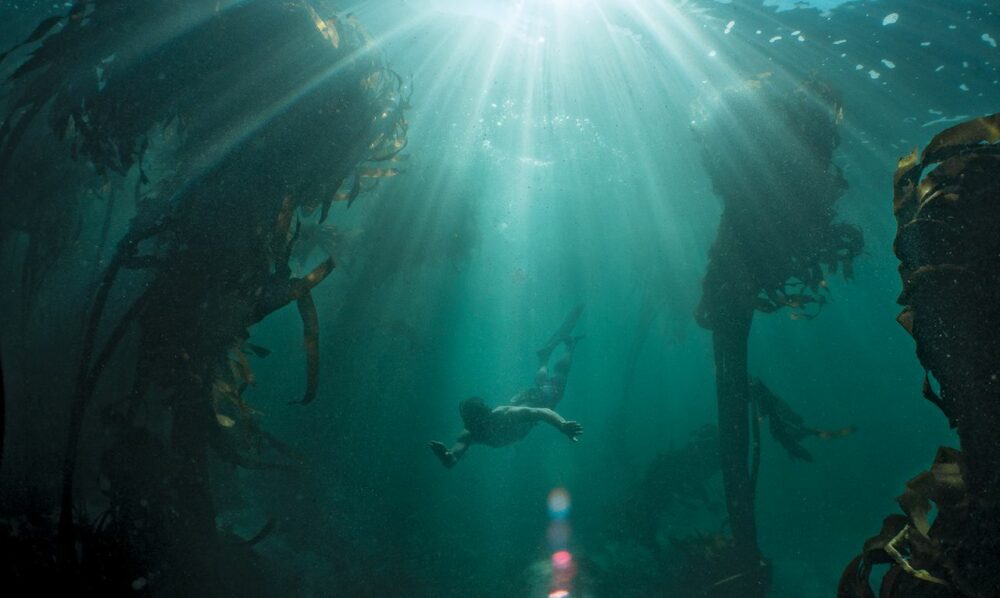
More Than 80 Percent of the Ocean Is Completely Unexplored
Humans have uncovered almost every inch of the land masses on Earth, but the vast majority of the oceans have never been explored. The ocean is the largest ecosystem on our planet, covering around 71 percent of the Earth’s surface. Yet, according to the National Oceanic and Atmospheric Administration, humans have explored and mapped less than 20 percent of that expanse. That includes parts of the ocean that have only been explored with unmanned vehicles.
Hard as it is to believe, humans know more about Mars than we do about the depths of the ocean on our own planet. Almost all of the Red Planet’s surface and even some of its underground have been mapped using exploratory space crafts and specialized cameras. However, the extreme pressure of the deep ocean can make sea exploration more challenging than space exploration. In the deepest parts of the ocean, pressure can reach as high as 16,000 pounds per square inch, roughly the equivalent of the weight of five cars stacked on top of each other. Most of the organisms in the ocean are also a mystery to humans. We’ve only identified about 9 percent of sea life, with millions of species yet to be discovered.
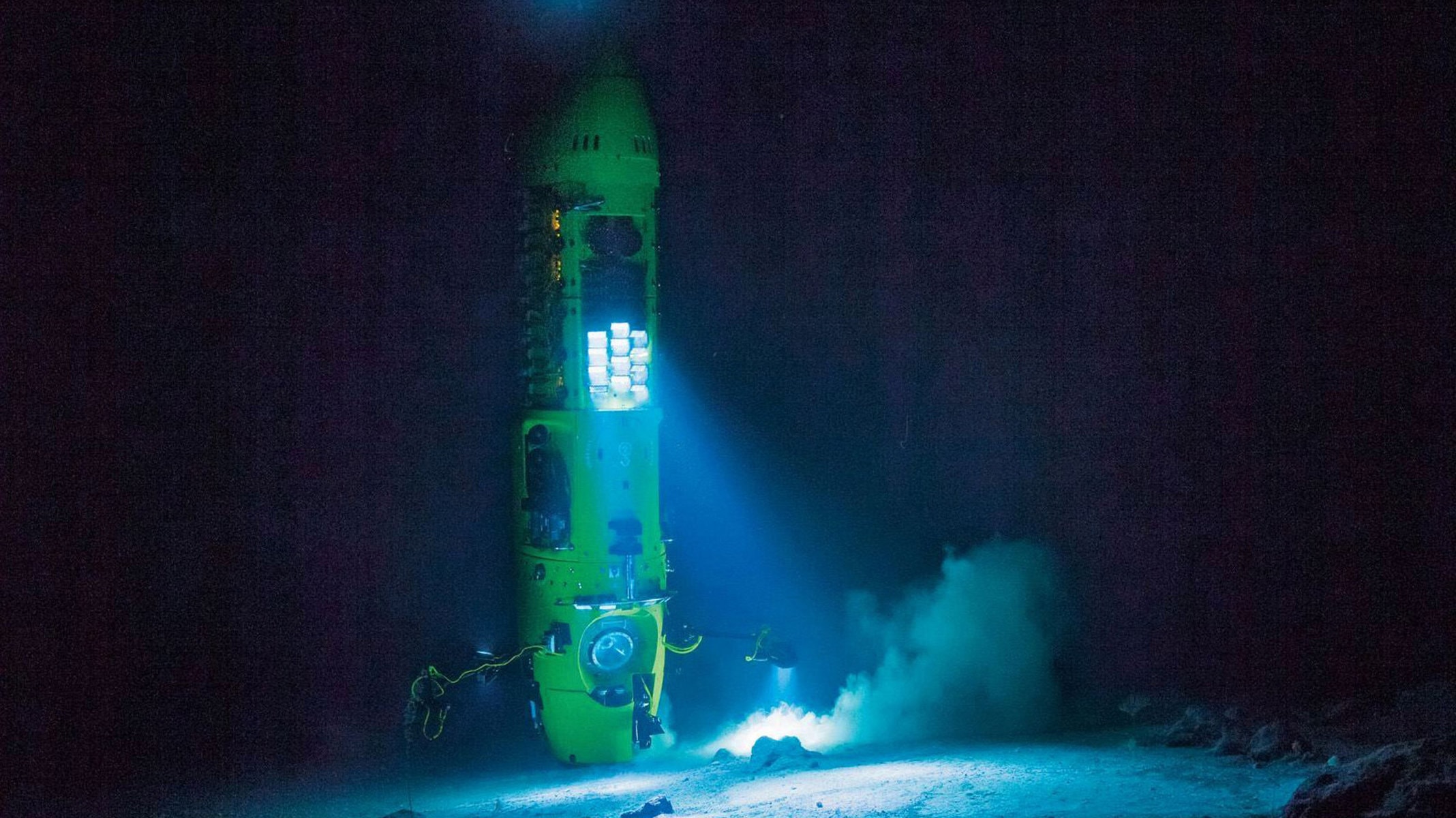
The Ocean Is Over a Mile Deeper Than Mt. Everest Is Tall
Seven miles below the surface of the ocean is Challenger Deep, the deepest known point on Earth. Located inside the expansive Mariana Trench east of the Philippines in the Pacific Ocean, Challenger Deep is so deep that if you set Mt. Everest on its floor, the peak would be a mile underwater. Mariana Trench was created 180 million years ago when two massive plates of Earth’s crust slammed into each other, and one slipped underneath the other. The result is a trench that stretches 200 kilometers (124 miles), which is unlike any other place on Earth. Temperatures in the water range from very cold (hovering around 34 degrees Fahrenheit or 1 degree celsius) to extremely hot (but not boiling due to the high pressure).
Mariana Trench was first discovered in 1875, and up until 2019, only three people had ever reached the bottom. (Fun fact: One of those three people is Avatar director James Cameron. The solo craft that he used can be seen in the picture above.) Since the launch of the submarine Limiting Factor, trips to Challenger Deep have become much more frequent. But, even now, fewer than 30 people have seen the natural wonder.
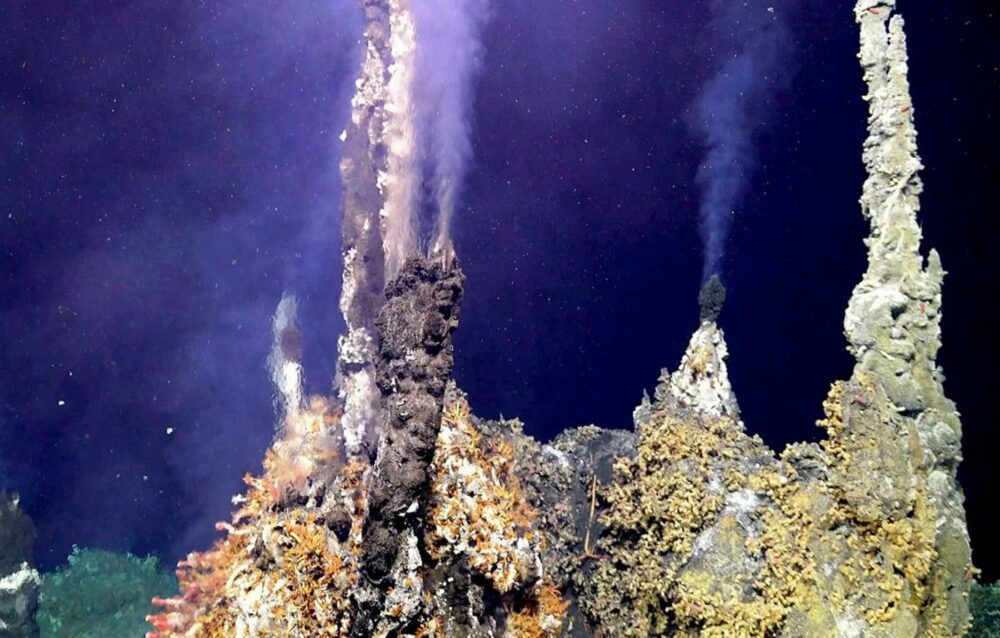
Massive Fields of Hydrothermal Vents Cover the Seafloor.
Far below the warmth of the sun, much of the ocean floor is unsurprisingly quite cold. So, it may surprise you to learn that some spots along the ocean floor reach scalding temperatures. In the 1970s, scientists discovered that the deep ocean houses vast fields of hydrothermal vents that spew scorching water and minerals from beneath the seafloor. Even more amazingly, these seemingly inhospitable vents support vibrant ecosystems of animals and microorganisms that have evolved to survive in one of the harshest environments on Earth.
Similar to geysers, hydrothermal vents form on small cracks and gaps where water can filter down beneath the Earth’s crust to the magma. The magma heats the water and enriches it with minerals like zinc and iron before it rises back up through the surface. As a result, the vents are rich in minerals and other chemicals that microbes convert into energy in much the same way that plants convert sunlight to energy. Giant tubeworms and the aptly named yeti crab are some of the animals that make hydrothermal vents their home. The oldest life on Earth is believed to have lived in hydrothermal vents over four billion years ago.
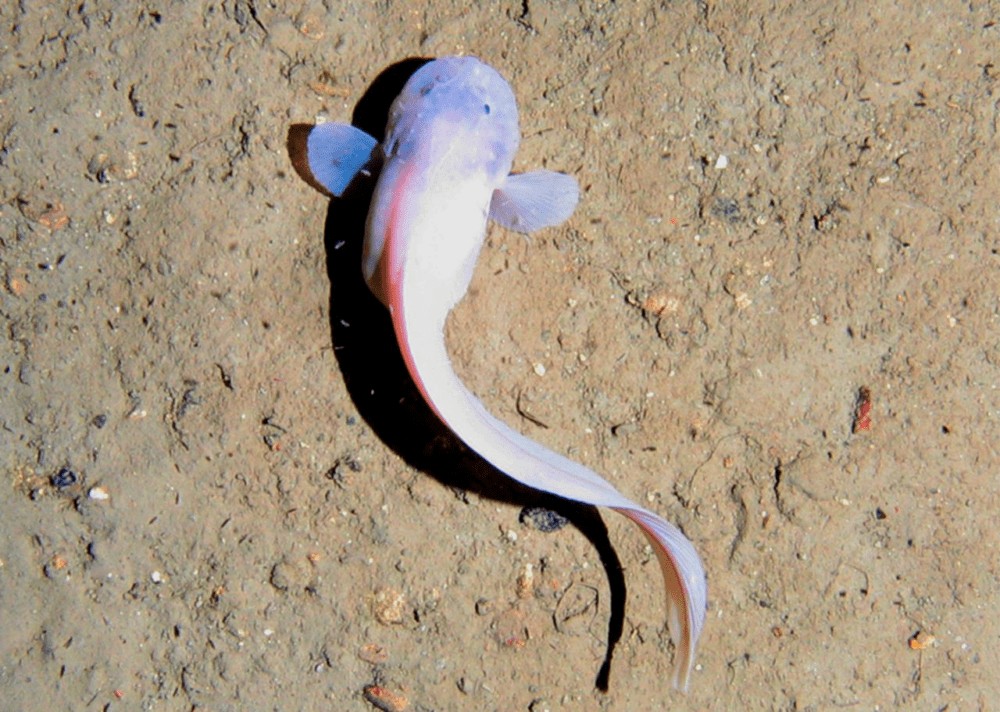
One Fish Thrives at Over Five Miles Under the Sea
While most of the most well-known deep ocean creatures are horrifying to behold, the most extraordinary fish roaming the waters is actually pretty cute. First discovered in 2014 during a month-long expedition in the Mariana Trench, the Mariana snailfish is tiny, pink, slimy, and a bit transparent. It also lives deeper in the ocean than any fish on Earth, over 8 kilometers or 26,722 feet below the surface. That’s nearly half a kilometer deeper than the hadal snailfish discovered in the Japan Trench in 2008.
Researchers still aren’t exactly sure what allows these scaleless, little fish to venture where other fish wouldn’t dare, but they do have some theories. Like some other deep sea fish, snailfish lack the air-filled swim bladders that fish keep fish closer to the surface afloat, but which would be flattened at depths where the snailfish thrives. Snailfish also have a layer of jelly under their skin and a special chemical in their cells that help them resist the crushing pressure. In fact, the fish is so well adapted to living under the intense pressure of the deep ocean that it literally melted when brought to the surface.
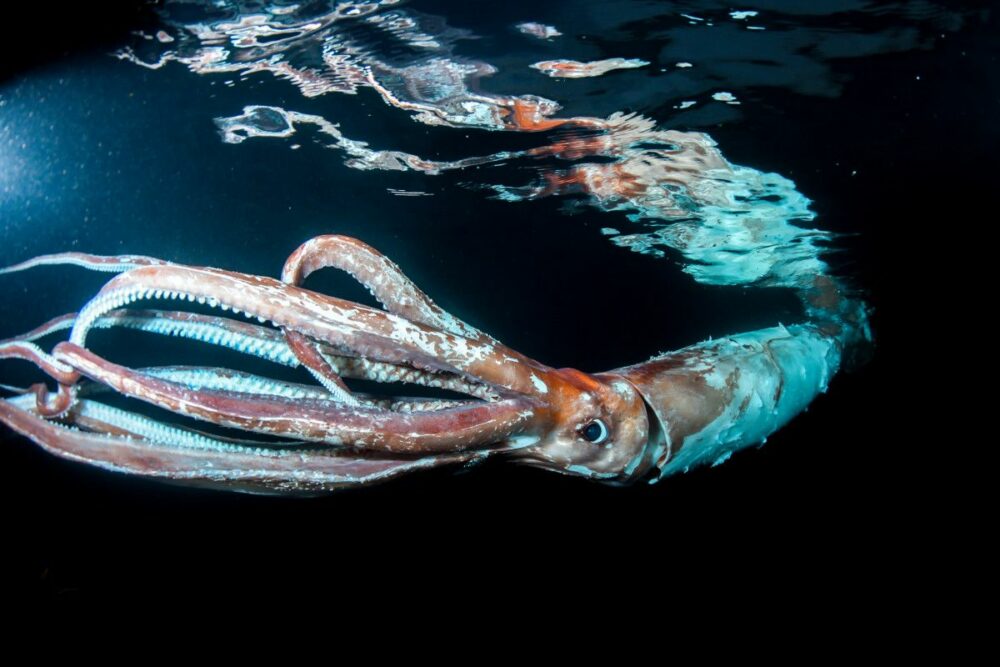
Giant, Mysterious Squids Roam the Deep Ocean.
For centuries, cultures around the world shared stories of a giant octopus-like beast that sank ships and haunted the seas. But it wasn’t until the mid-1800s that someone described the real-life creature behind the myths, the giant squid. Although many dead giant squids have washed up on shores worldwide, the first image of a live giant squid was only captured in 2005. Unlike their mythic counterparts, giant squids rarely come to the surface and are unlikely to attack any ships. But their size more than lives up to the legend. The largest giant squid on record was a whopping 43 feet long, and some researchers believe they could grow as large as 66 feet.
The giants aren’t the only unique squids in deep waters. The vampire squid resembles something out of a horror movie, with tentacles covered in large spines and connected by a cape (hence the name). Although it looks terrifying, the small squid only uses its spines in self-defense. If that’s not enough to intimidate predators, the vampire squid can switch on bioluminescence to distract or disorient potential threats, similar to the firefly squid. Perhaps the most mysterious deep-sea squid is the bigfin squid, whose spindly tentacles can grow up to 26 feet long. With fewer than two dozen human sightings, little is known about these elusive ocean dwellers.
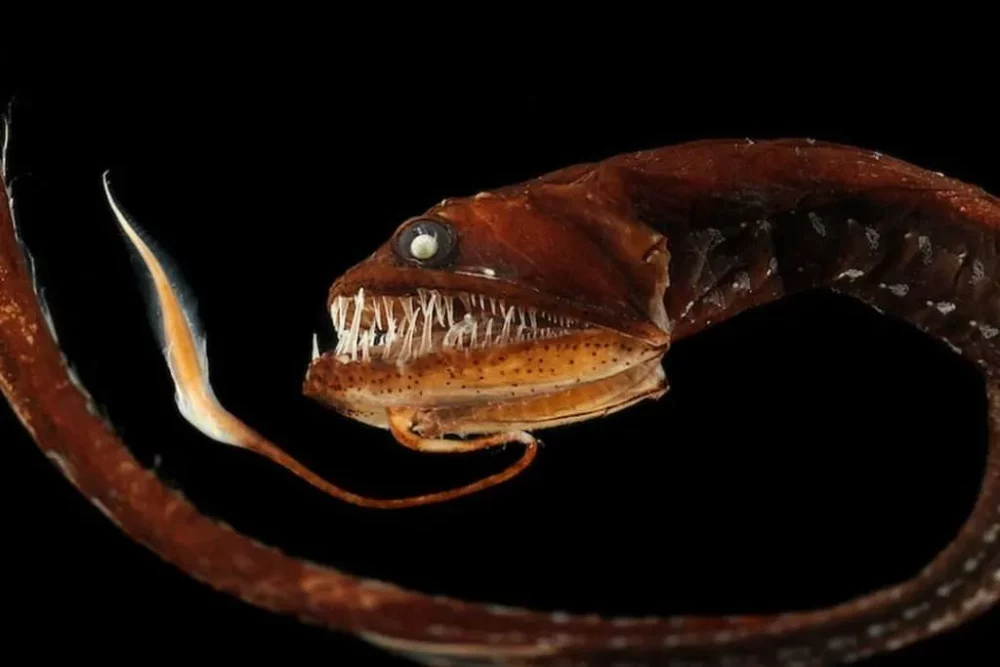
The Ocean’s Depths are Teeming With Terrifying Fish
The fish that live in the deep ocean are as resilient as they are bizarre-looking. With little to no light and limited availability of food, these fish have to get creative in their pursuit of prey. Take the anglerfish. Probably the most infamous deep-sea fish, the anglerfish has a glowing appendage growing right out of its head. The fish uses the light to lure unsuspecting fish straight into its mouth full of long, fang-like teeth. Similarly, the dragonfish has a small bioluminescent lure that hangs from its chin. While many deep sea fish are partially or totally translucent, the dragonfish’s stomach is thick enough to block the glow of its bioluminescent prey.
Like most menacing fish that inhabit the deep ocean, anglerfish and dragonfish are quite small, measuring only five or six inches. For example, the aptly named fangtooth is only about six inches long, despite having the largest teeth of any fish relative to its size. The slightly larger viperfish is a fearsome hunter that uses its protruding fangs to snare prey in near-complete darkness. Even more nightmarish is the fish’s ability to completely unhinge its jaw and trap small fish in a cage of its razor-sharp teeth. But the king of odd sea creatures might just be the gulper eel, whose gigantic, net-like mouth takes up a third of its body.

The Ocean Floor Is Littered With Millions of Wrecked Ships.
There’s much more than sea life lurching in the ocean abyss. UNESCO estimates that the hollow remnants of over three million boats lay scattered across the sea floor. That includes ancient Greek and Roman trading vessels, Columbus’ famed Santa Maria, World War II submarines, and the ill-fated Titanic. These shipwrecks aren’t just a glimpse into the past. They also create unique underwater ecosystems bursting with diverse marine life. There’s even evidence that the presence of a shipwreck might permanently alter the surrounding environment, and not always in negative ways. One study found that ship wreckage increased biodiversity in the surrounding ecosystem.
To date, less than a percent of sunken ships have been explored. But there’s now hope that the wreckage won’t be lost forever. Autonomous underwater and remotely operated vehicles, cutting-edge sonar sensors, and artificial intelligence image screening are helping researchers uncover new shipwrecks and further explore known sites. New technology is allowing humans to venture to previously unimaginable depths.
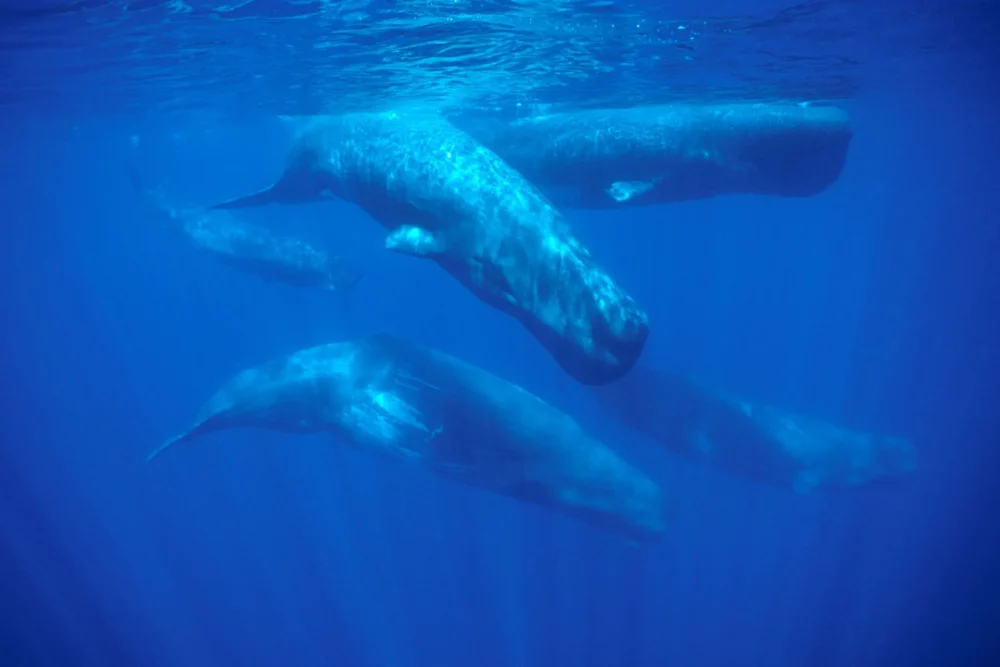
The Deep Sea Has Its Own Soundtrack.
The deep ocean may be vast and haunting, but it’s far from silent. The murky waters 1,000 meters below the surface are home to a symphony of underwater soundscapes. The sperm whale’s deafening clicks are the loudest sound produced by any animal. The clicks ring in at 200 decibels underwater, only slightly quieter than the loudest sound ever recorded. Above the surface, the whale’s song sounds quieter but is still powerful enough to burst your eardrums. Tiny snapping shrimp close their claws with such force and speed (nearly 100 miles per hour) that it produces a crackling sound. The noise is so loud that it can interfere with other sea animals’ communication and even human sonar systems.
These sounds help us better understand how marine life communicates and navigates underwater. They’re also important to ocean geology research. Sound surveillance has recorded the vibrations of massive underwater earthquakes and rumbling volcanic eruptions. Researchers use sound to study parts of the deep ocean that would otherwise be unreachable. The manmade sounds of sonar equipment and submarine vehicles add to the undersea chorus.
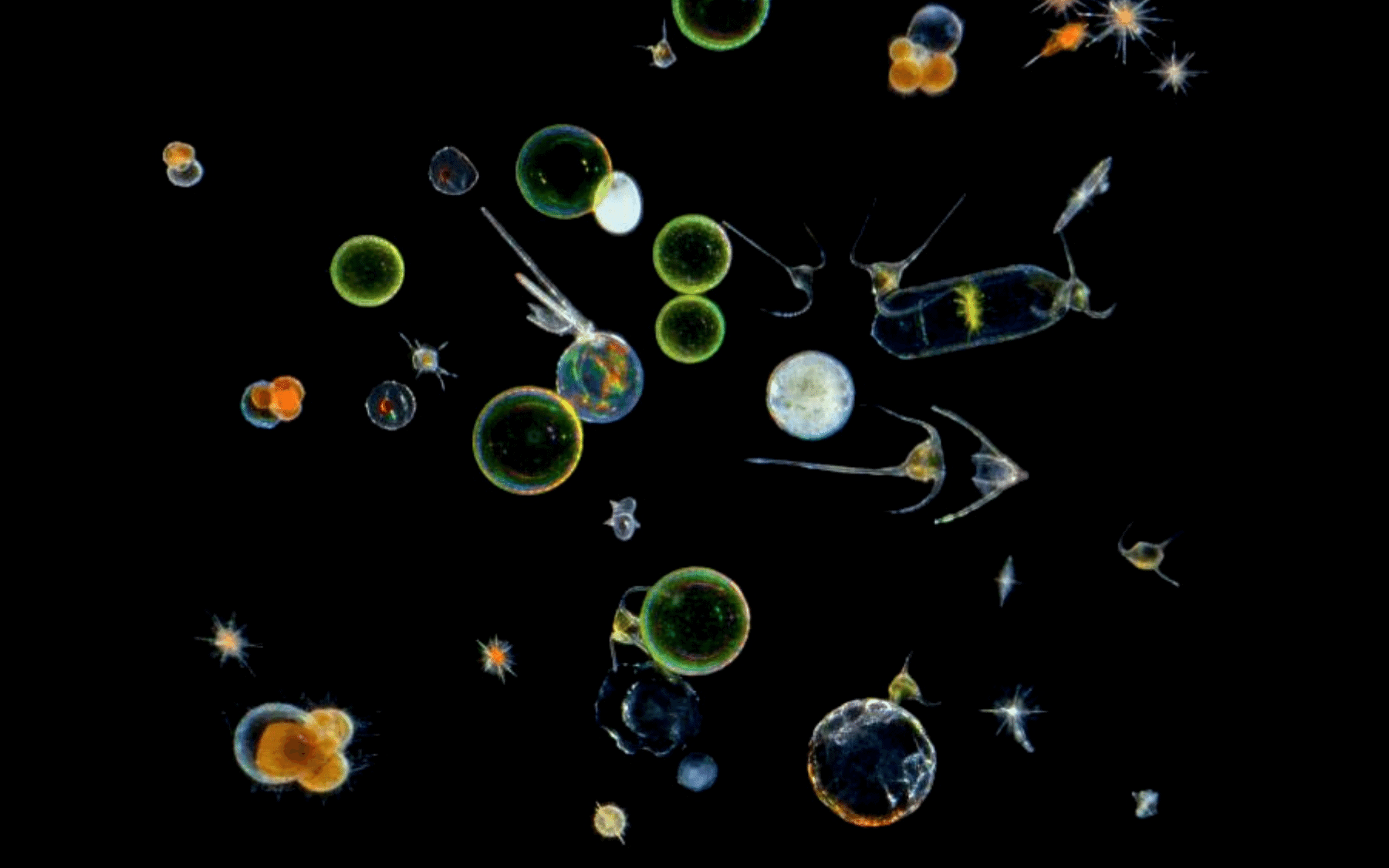
An Unfathomable Number of Microbes Live Under the Sea Floor.
Microscopic life under the sea floor is completely different from any known on Earth. Deep sea microbes must survive with no sunlight, limited nutrients, and few sources of energy. Recent research suggests that these microbes have adapted to survive in the environment by barely living at all. The traits that characterize living things, such as growth, reproduction, and the ability to adapt and respond to the environment, all require energy, which is in short supply deep under the ocean floor. So, deep sea microbes are mostly inactive, expending just enough energy to carry out only the most basic functions needed to stay alive.
Microbes use less energy than scientists previously believed was capable of sustaining life. These extraordinary organisms, too small to be seen with the naked eye, might just redefine what we consider life to be. And no one could argue that these microbes haven’t found the key to thriving in their harsh environment. Their population is estimated to be as high as 600 octillion. That’s the number 6 followed by 29 zeros, considerably more than the number of stars in the entire universe.
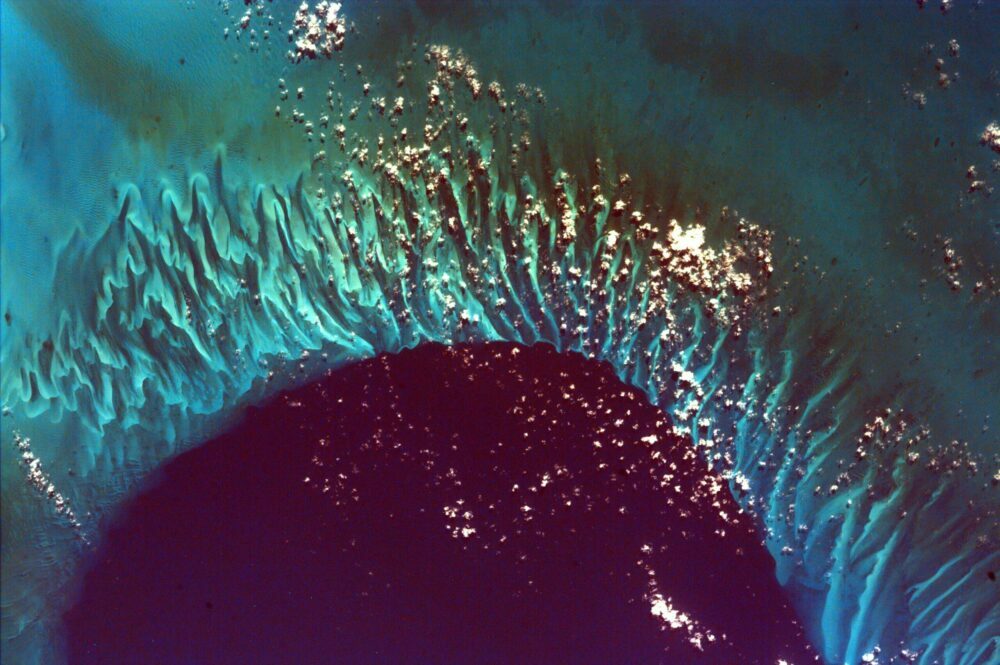
Undersea Canyons Are Deeper Than the Grand Canyon.
The Mariana Trench isn’t the only depressions ocean floor. The deep ocean features some of Earth’s most mindblowing canyons and trenches, including some that are deeper than the Grand Canyon. The Zhemchug Canyon, located in the Bering Sea, is the largest known submarine canyon, stretching 2.6 kilometers (8,530 feet) down compared to the Grand Canyon’s 1.8-kilometer depth (8,530 feet). The Great Bahama submarine canyon is one of the deepest undersea cave systems in the world. These colossal underwater canyons are so large they can be seen from space.
Submarine canyons offer a one-of-a-kind peak into our planet’s geologic history and potential insight into how similar structure form on other planets. The formations develop along continental shelves and slopes, which are the underwater edge of a continent. Over time, water currents erode the earth and carve out the massive canyons winding thousands of feet beneath the coastline. These canyons are rich ecosystems, home to clams and worms that live in the canyon walls. Deepwater coral and sea sponges provide habitats for a diverse population of fish and invertebrates that live and swim along the sea floor.
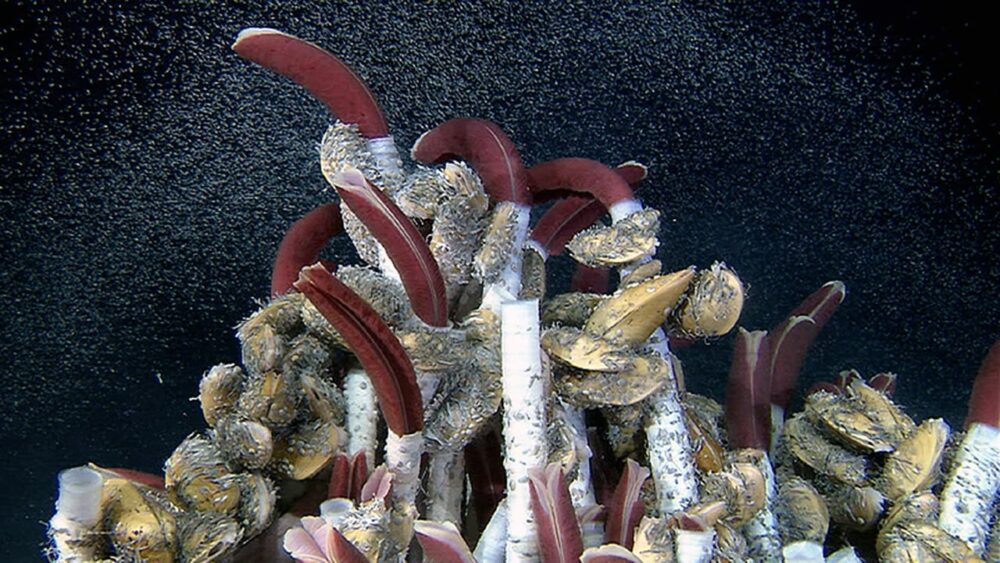
Cold Seeps Help Fuel Deep Sea Ecosystems.
Cold seeps, or cold vents, are areas on the deep ocean floor that release gases like methane into the surrounding water. Like hydrothermal vents, cold seeps support rich ecosystems by leaking gases that microbes convert into energy. However, while hydrothermal vents release metallic minerals, the gases that pour from cold seeps are carbon-based, meaning that they originated from organic, or living, matter millions of years ago. That means that cold seep areas are an important part of the global carbon cycle and are fueled by energy from the sun, even though they exist well beyond the reach of sunlight’s reach.
Cold seep areas are unique among deep-sea habitats because they are bursting with food sources. Giant tube worms and dense clusters of mussels provide homes to energy-producing bacteria that return the favor by serving as the animals’ digestive system. Crabs and other small crustaceans in cold seep areas feast on the waste of mussels, clams, and tubeworms, while fish and octopus have their pick of prey in the bustling ecosystem. Some of these flourishing communities are ancient, dating back as much as 4,000 years.
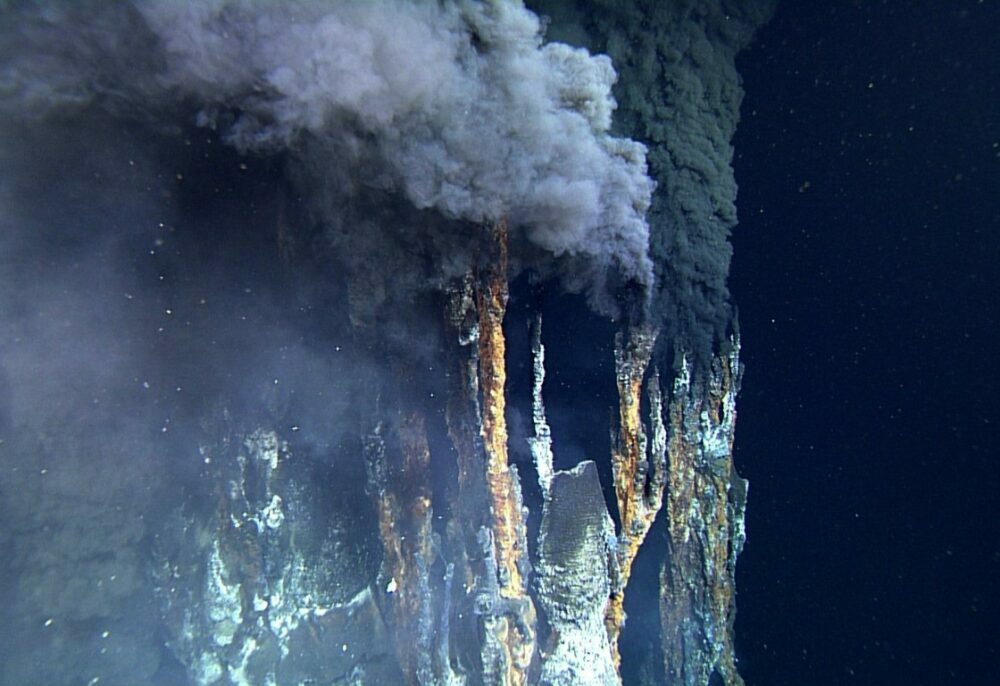
Black Smokers Are Ocean Chimneys Hot Enough to Melt Solid Metal.
All hydrothermal vents are hot. But black smokers take heat to the next level. These vents are formed when volcanic activity produces towering chimney-like structures that spew clouds of thick black fluid. Black smoker fluid can reach temperatures as high as 750 degrees Fahrenheit or 400 degrees Celsius. The clouds are packed with sulfur minerals that can be broken down by the microbes that live in and around black smokers. The vent’s emission gets its dark color from iron sulfide. The large sulfur deposits surrounding black smokers make them a target for deep-sea miners.
But it’s not only humans who are drawn to hydrothermal vents. Black smokers support ecosystems full of sea creatures uniquely adapted to live in the environment. The scaly-foot gastropod, a sea snail that is sometimes called a sea pangolin, uses iron sulfide deposits to construct the outermost layer of its protective shell. The Pompeii worms are covered in a fuzzy layer of bacteria that allows them to withstand blistering heat of up to 176 degrees Fahrenheit or 80 degrees Celsius, temperatures that would almost any other animal.

There Are Live Volcanoes on the Bottom of the Ocean.
Hydrothermal vents like black smokers don’t just spring up out of nowhere. The vents formed along massive underwater volcano ridges that contain an estimated one million volcanos. Although only a small fraction of these submarine volcanoes are active, they’re the source of far more volcanic activity than on land. Because these volcanoes give rise to hydrothermal vents, they are a big part of why life is possible in the deep ocean.
The mid-ocean ridge is the longest continuous volcano ridge, stretching over 40,000 miles (65,000km). The ridge’s discovery in the 1950s changed our understanding of how Earth’s tectonic plates shift to produce earthquakes and volcanic activity. However, there are still vast stretches of submarine volcanoes yet to be uncovered. For example, the deepest known submarine volcano was only discovered in 2008. The base of the West Mata volcano in northeastern Tonga rests 4,000 feet below the surface. New technology like remotely operated vehicles and satellite imaging are aiding researchers in their exploration of underwater volcanoes.
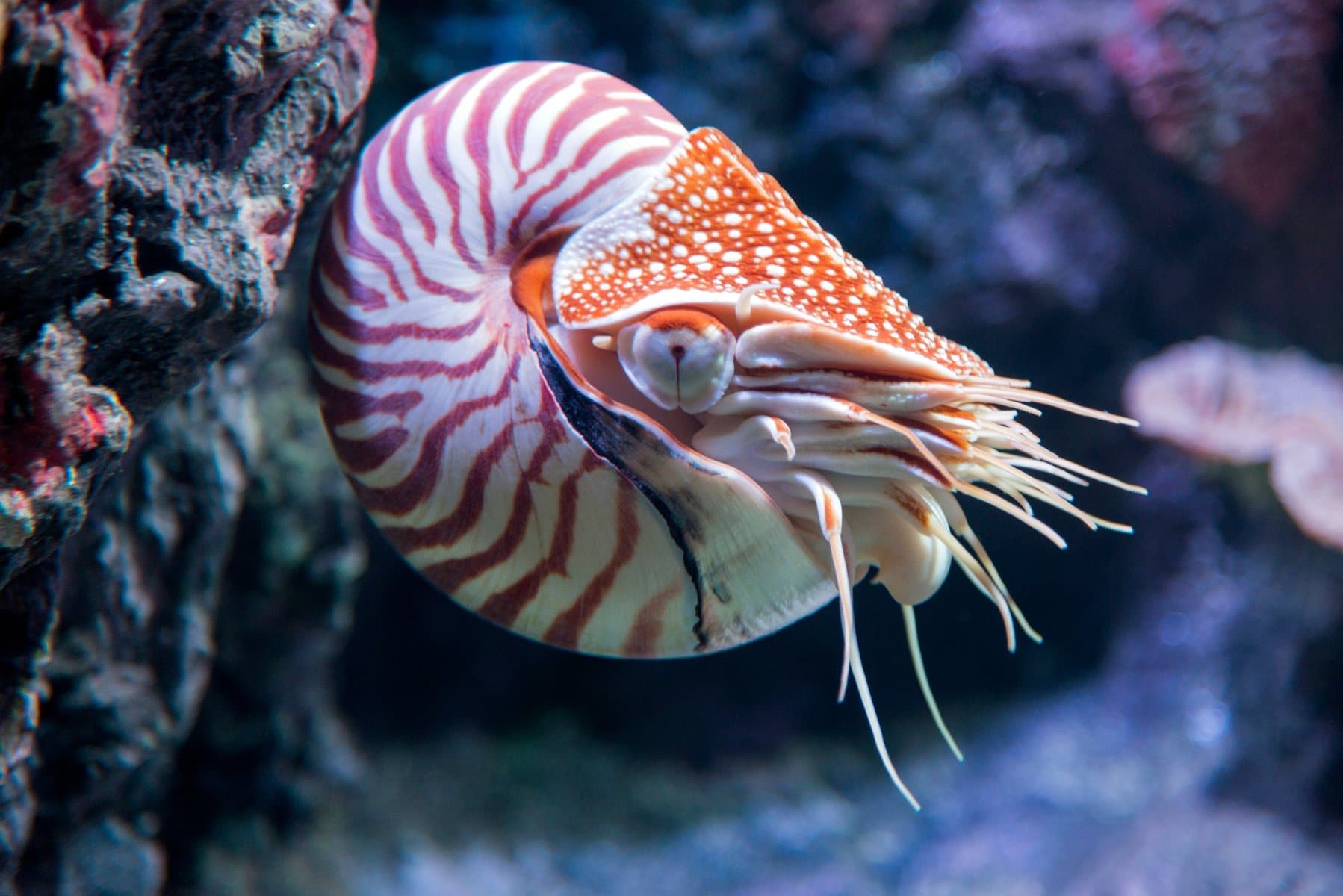
Living Fossils Are Right at Home in the Deep Ocean.
The earliest life on Earth lived deep in the ocean. So, it’s fitting that some of the oldest “living fossils” would still reside there. A living fossil is an organism that has existed in its current form for millions of years, outsurviving any near-relative species. The depths of the ocean are teeming with examples of these prehistoric creatures. The alien-like chambered nautilus appears to live just as it did over 400 million years ago, descending as deep as 2,600 feet (800 meters) to ensnare fish and small crustaceans in its tentacles. Frilled sharks, a closer relative of the long-extinct megalodon than modern sharks, have wide jaws adorned with 20 – 30 rows of razor-sharp teeth.
Perhaps the most intriguing living fossil is the coelacanth. The large fish looks unremarkable at first glance, but it has fascinated scientists for decades for the insight it provides into evolution. The fish was believed to have been extinct millions of years ago until it was spotted in the 1930s. Researchers are still learning about the fish’s unique traits that have allowed the species to survive for over 360 million years. Coelacanths are massive, growing up to 6 and a half feet long and 200 pounds. They are the longest-living fish species on record, with lifespans of up to 84 years. The fish also grow extremely slowly, not reaching sexual maturity until their 40s or 50s. Coelacanths have four fins on the bottom of their body that move like land animals’ limbs and give birth to live offspring rather than eggs like other fish.
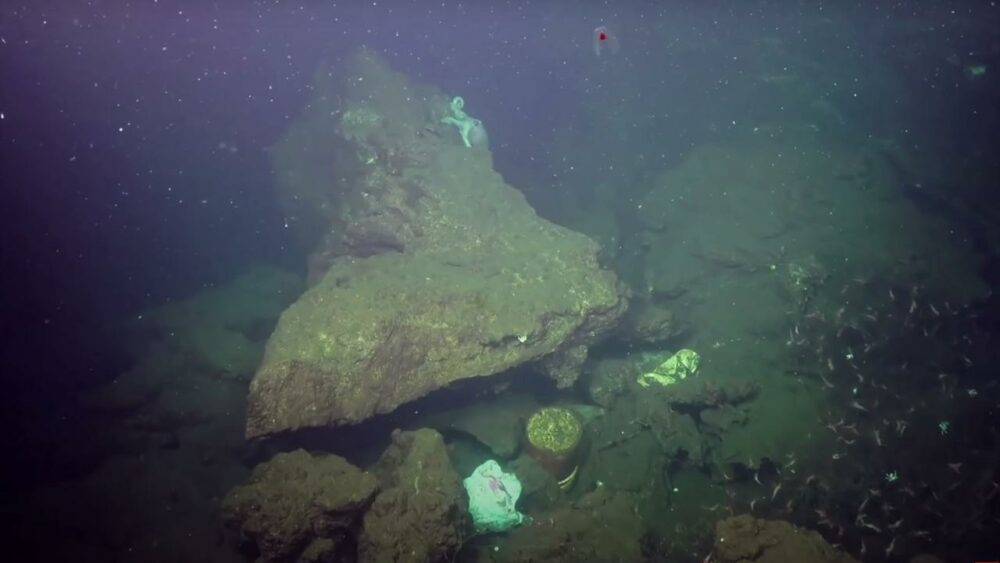
Even the Deepest Parts of the Sea Are Polluted
Unfortunately, there is no part of the planet that is safe from human pollution, not even the depths of the ocean. A 2017 study found chemicals that enter the water decades before are still present in deep-sea water. Even worse, the toxic chemicals had seeped into the tissue of some of the animals that make call the ocean home. And because these pollutants are biodegradable, they are likely to persist in the environment indefinitely, causing unknown harm to the ecosystem.
A 2018 expedition discovered trash and microplastics in the Mariana Trench, which contains the lowest point on Earth’s surface and has been protected by international law as a U.S. national monument since 2009. The extent of the pollution in the trench and other deep-sea locations is unknown, but any level of contamination could disrupt the marine life that has flourished there for eons. Without efforts to protect the deep sea, we could lose the oldest ecosystems on Earth.
Where Do We Find This Stuff? Here Are Our Sources:
Ten things you never knew about the ocean’s deepest places
Amazing Facts – Deep Sea Conservation Coalition
9 strange deep sea creatures you want to know
The deepest-dwelling fish in the sea is small, pink and delicate
16 creatures from the bottom of the ocean that will give you nightmares
The Deep Sea | Smithsonian Ocean

Your website isn’t very user friendly I’ve had to keep entering information to ask questions and leave a message whew!!
Heck did you see the other remarks? And questions ⁉️